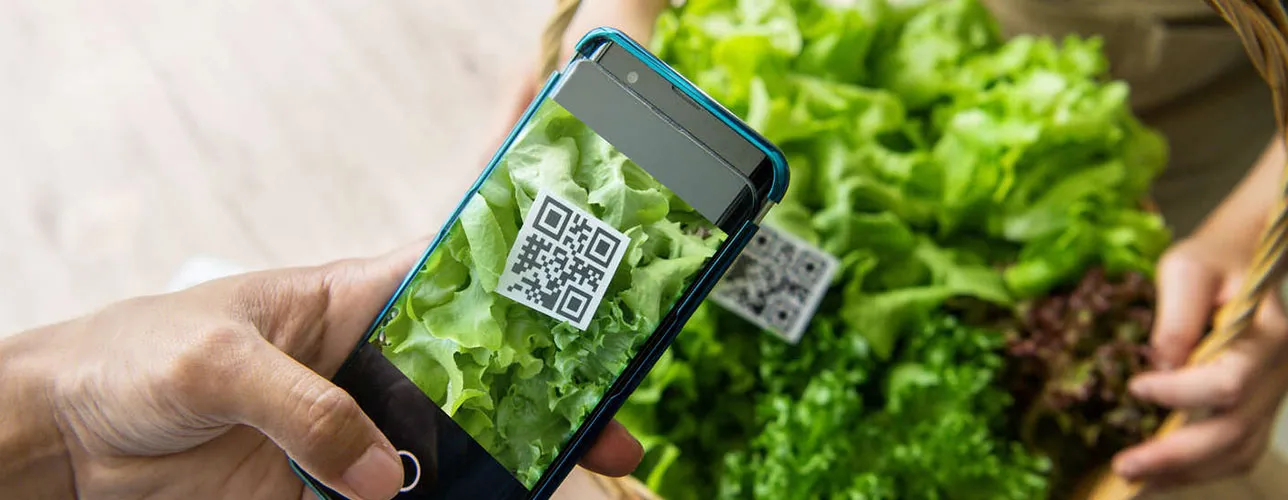A QR code is a tagging technology based on a two-dimensional matrix. As such, it holds more information than a bar code which is one dimensional, for example. QR stands for Quick Response. If scanned with a smartphone camera, for example, QR codes reveal quickly a web page or application with relevant information, payment information, a product or company’s verification/certification, someone’s geolocation or access when printed on boarding cards or tickets.
In today’s connected world, instant access through multiple channels and platforms is becoming common. Consumers also increasingly base purchasing decisions on a single product’s story and features rather than blind loyalty to brands. QR-codes, for example, can provide quick access to such information, directly from a product. Storing the product data on a blockchain ensures the transparency and trust consumers demand.
The recent DNV GL ViewPoint survey What matters to consumers when buying food & beverage products? looked specifically at QR code technology application in the food and beverage industry. How aware are consumers worldwide and do they use QR codes to aid their purchasing decisions?
Many producers and manufacturers use QR codes or other tagging technologies on the product packaging. When scanned, the consumer is taken to an application or webpage providing more information about the product, producer or brand. The aim is often to inform, promote or retain loyalty. This way of communicating allows for much more information to be shared than can fit on the packaging, and any story can be told in a more engaging and visual way. Moreover, companies can document and prove their claims by displaying certificates or blockchained data linked to that specific product rather than a corporate spiel.
Geographical differences when it comes to familiarity and use is found in the survey. In China and Brazil more than 55% say they have noticed QR codes on food packaging and scanned one at least once. In Europe and the US around 75% have spotted a QR code, but less than half have actually scanned it (33% in Europe; 39% in the US). One reason can be found in the proliferation of QR codes for digital payments, ticketing and other purposes, in China in particular where the WeChat app is used for everything these days. Moreover, the study revealed that use of QR-codes was more prevalent in areas where consumers take an individual responsibility for checking information to assure food safety of the products they buy.
In Europe and the US, about 20% don’t see many QR codes on food packaging. However, about 53% declare that they are willing to try if promised information on product origin and authenticity, for example.
The survey revealed that consumers are most interested in product information. Beyond food safety, topics such as content, origin of ingredients and sustainable packaging are top of mind. Moreover, the product itself is their primary source. The awareness and willingness to use QR codes does not seem to be the limiting factor for companies to explore and implement this technology.
Nevertheless, consumers’ needs can be divided in two groups. The first group (19%) has either not seen many QR codes yet or don’t know what QR codes are and thus will need some explanation and education. The second group (46%) has already tried; however, they may want added value before starting to use them regularly.
What seems to be common is that, while QR code seems to be widespread, the engagement among food and beverage consumers seems to be low. This indicates that the full potential of this technology is yet to be exploited by the food &beverage industry. However, solutions exist to share trusted product information and stories with consumers through engaging labels with QR-codes embedded. Companies able to share more seem to have much to gain.
